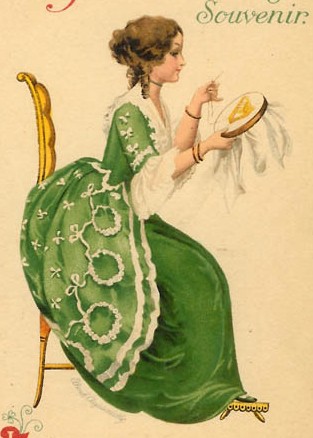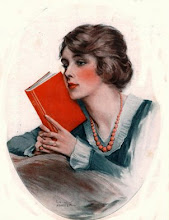
Roosters
by Elizabeth Bishop
At four o'clock
in the gun-metal blue dark
we hear the first crow of the first cock
just below
the gun-metal blue window
and immediately there is an echo
off in the distance,
then one from the backyard fence,
then one, with horrible insistence,
grates like a wet match from the broccoli patch,
flares,and all over town begins to catch.
Cries galorecome from the water-closet door,
from the dropping-plastered henhouse floor,
where in the blue blur their rusting wives admire,
the roosters brace their cruel feet and glare
with stupid eyes
while from their beaks there rise
the uncontrolled, traditional cries.
Deep from protruding chests
in green-gold medals dressed,
planned to command and terrorize the rest,
the many wives who lead hens' lives
of being courted and despised;
deep from raw throats
a senseless order floats
all over town. A rooster gloats
over our beds
from rusty irons sheds
and fences made from old bedsteads,
over our churches where the tin rooster perches,
over our little wooden northern houses,
making sallies from all the muddy alleys,
marking out maps like Rand McNally's:
glass-headed pins,
oil-golds and copper greens,
anthracite blues, alizarins,
each one an active displacement in perspective;
each screaming, "This is where I live!"
Each screaming"Get up! Stop dreaming!"
Roosters, what are you projecting?
You, whom the Greeks elected
to shoot at on a post, who struggled
when sacrificed, you whom they labeled
"Very combative..."what right have you to give commands and tell us how to live,
cry "Here!" and "Here!"and wake us here where are
unwanted love, conceit and war?
The crown of red set on your little head
is charged with all your fighting blood
Yes, that excrescence makes a most virile presence,
plus all that vulgar beauty of iridescence
Now in mid-airby two they fight each other.
Down comes a first flame-feather,
and one is flying, with raging heroism defying
even the sensation of dying.
And one has fallen but still above the town
his torn-out, bloodied feathers drift down;
and what he sungno matter. He is flung
on the gray ash-heap, lies in dung
with his dead wiveswith open, bloody eyes,
while those metallic feathers oxidize.
St. Peter's sin was worse than that of Magdalen
whose sin was of the flesh alone;
of spirit, Peter's, falling, beneath the flares
among the "servants and officers."
Old holy sculpture could set it all together
in one small scene, past and future:
Christ stands amazed,
Peter, two fingers raised
to surprised lips, both as if dazed.
But in between
a little cock is seen
carved on a dim column in the travertine,
explained by gallus canit;
flet Petrus underneath it,
There is inescapable hope, the pivot;
yes, and there Peter's tears
run down our chanticleer's
sides and gem his spurs.
Tear-encrusted thick
as a medieval reliche waits. Poor Peter, heart-sick,
still cannot guess
those cock-a-doodles yet might bless,
his dreadful rooster come to mean forgiveness,
a new weather
basilica and barn,
and that outside the Lateran
there would always be a bronze cock on a porphyry
pillar so the people and the Pope might see
that event the Prince
of the Apostles long since
had been forgiven, and to convince
all the assembly that "Deny deny deny"
is not all the roosters cry.
In the a low light is floating
in the backyard, and gilding
from underneath
the broccoli, leaf by leaf;
how could the night have come to grief?
gilding the tiny floating swallow's belly
and lines of pink cloud in the sky,
the day's preamble like wandering lines in marble,
The cocks are now almost inaudible.
The sun climbs in, following "to see the end,
"faithful as enemy, or friend.






-b.JPG)




.JPG)
.JPG)



















.JPG)


















